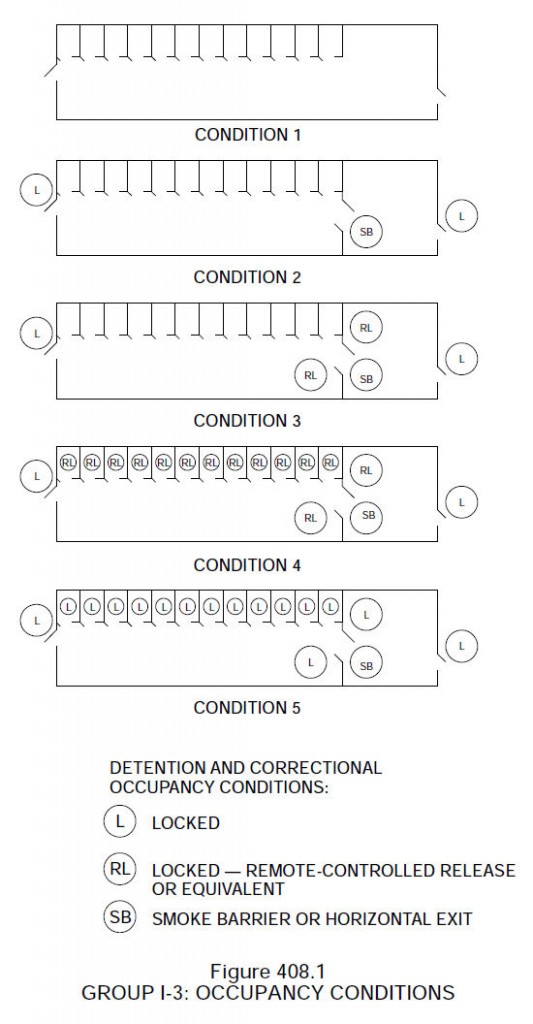 Earlier this week I read several news reports of a disastrous fire in an overcrowded Honduras prison, where hundreds of prisoners died. Many of them remained locked in their cells because there was reportedly only one staff member who had keys to the cells, and he left in the midst of the panic. It made me wonder about the current code requirements for egress in prisons. I know it’s not something most of us encounter regularly, but inquiring minds want to know.
Earlier this week I read several news reports of a disastrous fire in an overcrowded Honduras prison, where hundreds of prisoners died. Many of them remained locked in their cells because there was reportedly only one staff member who had keys to the cells, and he left in the midst of the panic. It made me wonder about the current code requirements for egress in prisons. I know it’s not something most of us encounter regularly, but inquiring minds want to know.
Locked cells hampered inmate escape from deadly Honduras prison fire
Miami Herald
Some of deadliest fires at prisons around globe
Washington Post
According to the 2009 International Building Code, a prison would be considered Group I-3, which includes buildings inhabited by more than 5 people under restraint or security. Group I-3 is further broken down into 5 occupancy conditions, shown in the graphic on the right. The occupancy conditions range from facilities with minimal security, to those where inmates are contained in locked cells. Section 408 details the requirements for Group I-3, and states that the Means of Egress requirements of Chapter 10 apply to these facilities, unless modified by Section 408.
I have included the applicable paragraphs from Section 408 below, but here’s the abridged version:
- Figure 408.1 shows the locations for locked doors, doors with remotely released locks, and doors with free egress, as well as locations for smoke barriers for each occupancy condition.
- Where allowed by the applicable occupancy condition, egress doors can be locked. Exterior doors from a refuge area can be locked with a key (remote release not required), but the keys must be available at all times. The lock must be able to be unlocked from both sides, which allows staff to unlock the door from the exterior without entering the facility.
- When locks with remote release capabilities are used, a reliable means of releasing the locks is required, and in occupancy conditions 3 and 4 the locks must be able to be released within 2 minutes, with the minimum staff available. The exception to paragraph 408.4.1 allows remote unlocking to be omitted on Condition 4 facilities, as long as there are not more than 10 locks which need to be unlocked to move occupants to a refuge area. This must be accomplished within 3 minutes and with no more than 2 separate keys.
- Power-operated sliding doors and power-operated locks must have a manual release mechanism at the door, and must also have emergency power or a remote mechanical operating release. Emergency power is not required for facilities with 10 locks or less that comply with the exception to 408.4.1 (above).
- Doors remotely unlocked must not relock automatically when closed, unless the relocking is controlled by the remote location.
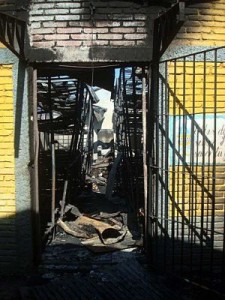 So, looking at Figure 408.1, which shows mechanically-locked doors for Condition 5, how does this protect occupants from a fire like the one in Honduras? If an occupant set his mattress on fire in one of the cells (the cause of the Honduras fire), the staff may not be able to reach the doors to unlock them and provide a means of egress. The difference is in the construction of the building. In Condition 5, each sleeping area must be separated from adjacent sleeping areas, corridors, and common spaces by a smoke-tight partition, and common spaces must be separated from the corridor by a smoke-tight partition. And all I-3 occupancies must be protected by a fire alarm and sprinkler system. Staff must be trained in emergency evacuation procedures, and the facility must hold periodic drills. These safety features would have greatly reduced the number of fatalities in the recent prison fire in Honduras.
So, looking at Figure 408.1, which shows mechanically-locked doors for Condition 5, how does this protect occupants from a fire like the one in Honduras? If an occupant set his mattress on fire in one of the cells (the cause of the Honduras fire), the staff may not be able to reach the doors to unlock them and provide a means of egress. The difference is in the construction of the building. In Condition 5, each sleeping area must be separated from adjacent sleeping areas, corridors, and common spaces by a smoke-tight partition, and common spaces must be separated from the corridor by a smoke-tight partition. And all I-3 occupancies must be protected by a fire alarm and sprinkler system. Staff must be trained in emergency evacuation procedures, and the facility must hold periodic drills. These safety features would have greatly reduced the number of fatalities in the recent prison fire in Honduras.
2009 International Building Code:
408.4 Locks. Egress doors are permitted to be locked in accordance with the applicable use condition. Doors from a refuge area to the exterior are permitted to be locked with a key in lieu of locking methods described in Section 408.4.1. The keys to unlock the exterior doors shall be available at all times and the locks shall be operable from both sides of the door.
408.4.1 Remote release. Remote release of locks on doors in a means of egress shall be provided with reliable means of operation, remote from the resident living areas, to release locks on all required doors. In Occupancy Conditions 3 or 4, the arrangement, accessibility and security of the release mechanism( s) required for egress shall be such that with the minimum available staff at any time, the lock mechanisms are capable of being released within 2 minutes.
Exception: Provisions for remote locking and unlocking of occupied rooms in Occupancy Condition 4 are not required provided that not more than 10 locks are necessary to be unlocked in order to move occupants from one smoke compartment to a refuge area within 3 minutes. The opening of necessary locks shall be accomplished with not more than two separate keys.
408.4.2 Power-operated doors and locks. Power-operated sliding doors or power-operated locks for swinging doors shall be operable by a manual release mechanism at the door, and either emergency power or a remote mechanical operating release shall be provided. Exception: Emergency power is not required in facilities with 10 locks or less complying with the exception to Section 408.4.1.
408.4.3 Redundant operation. Remote release, mechanically operated sliding doors or remote release, mechanically operated locks shall be provided with a mechanically operated release mechanism at each door, or shall be provided with a redundant remote release control.
408.4.4 Relock capability. Doors remotely unlocked under emergency conditions shall not automatically relock when closed unless specific action is taken at the remote location to enable doors to relock.
NFPA 101 – The Life Safety Code details the requirements for prisons in Chapters 22 & 23 – New and Existing Detention and Correctional Occupancies. Like the IBC, there are 5 different use conditions for detention and correctional occupancies, ranging from Free Egress to Contained. The egress requirements are very similar to those of the IBC.
2009 NFPA 101, The Life Safety Code:
22.2.11.7 Doors from areas of refuge to the exterior shall be permitted to be locked with key locks in lieu of locking methods described in 22.2.11.8, the keys to unlock such doors shall be maintained and available at the facility at all
times, and the locks shall be operable from the outside.
22.2.11.8* Any remote-control release used in a means of egress shall be provided with a reliable means of operation
to release locks on all doors and shall be remotely located from the resident living areas, unless otherwise permitted by 22.2.11.8.2.
A.22.2.11.8 A remote position is generally a control point where a number of doors can be unlocked simultaneously, either mechanically or electrically. In areas where there are a number of sleeping rooms, it is impractical for attendants to unlock doors individually. Doors in an exit should be unlocked prior to unlocking sleeping room doors. Sight and sound supervision of resident living areas can be by means of camera and communications systems. This section of the Code does not intend to prohibit Use Condition V facilities, nor does it intend to limit Use Condition V facilities to 10 manually released locks.
22.2.11.8.1 The remote location of a remote-control release used in a means of egress shall provide sight and sound supervision of the resident living areas.
22.2.11.8.2 Remote-control locking and unlocking of occupied rooms in Use Condition IV shall not be required, provided that both of the following criteria are met: (1) Not more than 10 locks need to be unlocked to relocate all occupants from one smoke compartment to an area of refuge as promptly as is required where remote-control unlocking is used. (See 22.3.7.9 for requirements for smoke barrier doors.) (2) Unlocking of all necessary locks is accomplished with not more than two separate keys.
22.2.11.9 All remote-control release–operated doors shall be provided with a redundant means of operation as follows:
(1) Power-operated sliding doors or power-operated locks shall be constructed so that, in the event of power failure, a manual mechanical means to release and open the doors is provided at each door, and either emergency power arranged in accordance with 7.9.2.3 is provided for the power operation or a remote-control manual mechanical release is provided.
(2) Mechanically operated sliding doors or mechanically operated locks shall be provided with a manual mechanical
means at each door to release and open the door.
22.2.11.10 The provisions of 7.2.1.5.7 for stairway re-entry shall not apply.
22.2.11.11 Doors unlocked by means of remote control under emergency conditions shall not automatically relock when closed, unless specific action is taken at the remote control location to enable doors to relock.
22.2.11.12 Emergency power shall be provided for all electric power–operated sliding doors and electric power–-
operated locks, unless otherwise permitted by 22.2.11.12.2.
22.2.11.12.1 The emergency power shall be arranged to automatically operate within 10 seconds upon failure of normal power and to maintain the necessary power source for a minimum of 11/2 hours.
22.2.11.12.2 The emergency power specified in 22.2.11.12 shall not be required in facilities with 10 or fewer locks
complying with 22.2.11.8.2.
Graphic: 2009 International Building Code Commentary
Photo: Newsday
You need to login or register to bookmark/favorite this content.


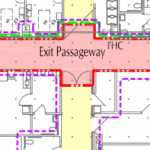
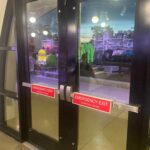

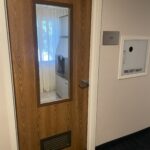
Have not heard what the prison was constructed with.
As you say a place built today would have fire sprinklers
Possibly have fire rated walls to seperate larger pods from each other, like a hospital
Possibly have smoke removal
Cynical me — or is that experienced me — suspects Honduras has similar construction standards for the prison as those given above. However, poor countries are less rigorous in enforcement of building standards for stuff like hotels and casinos, so a prison is probably not to the required codes either. This came up in discussion today at work and a co-worker reminded me of the hotel in Mx with the improper gas line under the wood floor. When a leak developed, the place was flattened.
And prisons have to worry about inmate attacks on guards and firefighters. Standard methods to get a hose in a door leaves the door open. I think that is a problem for prisons.
I’m a correctional officer at a facility that just removed the electronic controlled doors, from the control tower and replaced them with manually locked doors…. there are approximately 130 men behind 65 doors,one key to manually unlock ALL of these doors and only one floor officer to do it….. that seems to be a fire hazard.
Hi Big Papi –
I looked at the 2015 International Building Code (which may or may not be the correct code for your jurisdiction but it’s a good starting point). This is the section that would apply to your doors:
408.4.1 Remote release. Remote release of locks on doors in a means of egress shall be provided with reliable means of operation, remote from the resident living areas, to release locks on all required doors. In Occupancy Condition 3 or 4, the arrangement, accessibility and security of the release mechanisms required for egress shall be such that with the minimum available staff at any time, the lock mechanisms are capable of being released within 2 minutes.
Exception: Provisions for remote locking and unlocking of occupied rooms in Occupancy Condition 4 are not required provided that not more than 10 locks are necessary to be unlocked in order to move occupants from one smoke compartment to a refuge area within 3 minutes. The opening of necessary locks shall be accomplished with not more than two separate keys.
This is from the IBC Commentary:
The provisions of this section do not mandate remote release locks; rather, the facility determines the level and manner in which security is to be provided. Door locking arrangements fall into one of the conditions defined in Section 308.5. If remote release locks are provided, the means of operating them must be external to the resident housing area so the staff is not required to enter the housing area to release the locks. Clearly, in Conditions 3 and 4, excessive delay in releasing locks puts the occupants at additional risk. Locks in Conditions 3 and 4 must be able to be released promptly (within 2 minutes) with the minimum staff that will be available. A control center is typically provided for two or more housing areas from which the locks are controlled. In evaluating the use and arrangement of the remote release, consideration must be given to the intended staffing levels at different times of the day, as well as the locations of the remote release.
The condition definitions of Section 308.5 are intended to relate to the time necessary to evacuate the residents to a refuge area, such as a smoke compartment; therefore, in Condition 4, manual release locks may be used only when no more than 10 locks have to be unlocked in order to move all occupants from one smoke compartment to another and provided that this can be accomplished within 3 minutes. The time period of 3 minutes is presumed to be a reasonable staff response time to a fire emergency. So that the time to release the locks is kept to a minimum, it cannot take more than two separate keys to release the 10 locks. Again, the intended staff levels of the facility need to be considered (see Commentary Figure 408.4.1).”
I hope this helps! If you need more information, feel free to email me at lori.greene@allegion.com.
– Lori